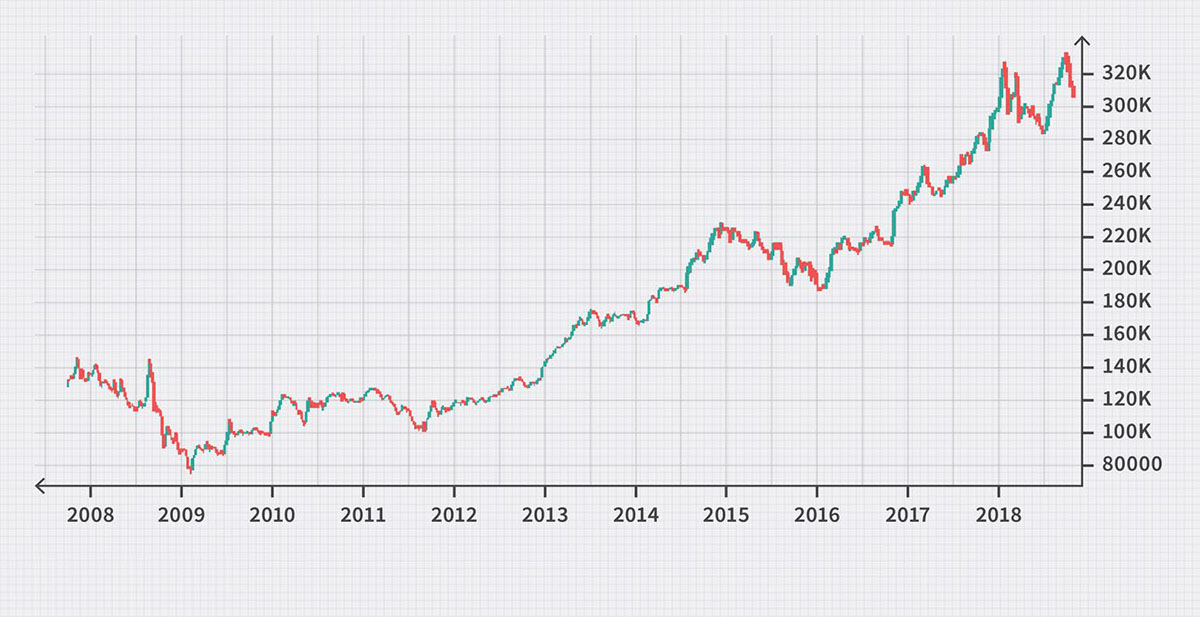

Finance
How To Create A Pitch For Seed Funding
Published: January 17, 2024
Learn how to create an effective pitch for seed funding in the finance industry. Get expert tips and strategies to secure funding for your startup.
(Many of the links in this article redirect to a specific reviewed product. Your purchase of these products through affiliate links helps to generate commission for LiveWell, at no extra cost. Learn more)
Table of Contents
- Introduction
- Understanding Seed Funding
- Researching Potential Investors
- Crafting Your Elevator Pitch
- Highlighting Your Value Proposition
- Defining Your Target Market
- Demonstrating Market Opportunity
- Presenting Your Business Model
- Outlining Your Competitive Advantage
- Building a Financial Forecast
- Creating a Compelling Presentation Deck
- Preparing for the Q&A Session
- Conclusion
Introduction
Welcome to the exciting world of seed funding! If you have a brilliant business idea or a startup that needs a financial boost, seed funding can be a game-changer for you. It provides the initial investment needed to get your venture off the ground and turn your dreams into reality. However, securing seed funding is not an easy task. Investors receive countless pitches on a daily basis, making it essential for you to create a compelling and persuasive pitch that captures their attention and convinces them to invest in your venture.
In this comprehensive guide, we will walk you through the process of creating a powerful pitch for seed funding. We will explore the key elements and strategies you need to consider to make your pitch stand out from the crowd. From researching potential investors to crafting an irresistible value proposition, we will cover all the crucial steps to help you secure the funding you need.
But before we dive into the nitty-gritty of creating a pitch, let’s first understand what exactly seed funding is and why it is crucial for startups and early-stage companies.
Seed funding, also known as seed capital or seed money, refers to the initial funding required to kickstart a business or a startup. This funding round typically occurs in the early stages of a company’s development, before it has generated significant revenue or reached profitability. Seed funding provides entrepreneurs with the necessary capital to refine their product, conduct market research, hire key team members, and lay the foundation for future growth.
Securing seed funding is a critical milestone for startups and allows them to bridge the gap between the idea stage and subsequent stages of funding, such as Series A or Series B funding. It provides the financial runway and resources needed to turn a visionary concept into a viable, scalable business. Seed funding can come from a variety of sources, including angel investors, venture capital firms, crowdfunding platforms, and even friends and family.
Now that we have a clear understanding of seed funding, let’s delve into the intricacies of creating a persuasive pitch that will captivate potential investors and help fund your entrepreneurial journey.
Understanding Seed Funding
Seed funding is a vital stage in the startup funding lifecycle. It serves as the initial capital injection that allows entrepreneurs to transform their ideas into viable businesses. Understanding the key aspects of seed funding is crucial for entrepreneurs seeking financial support for their ventures.
At its core, seed funding is all about taking risks on promising ideas and visionary entrepreneurs. Investors who provide seed funding understand the potential for high returns and are willing to take on the inherent risks associated with early-stage ventures.
Seed funding offers several advantages for startups. Firstly, it provides the much-needed financial support to research, develop, and test a minimum viable product (MVP), which is an early version of the product or service. This funding allows entrepreneurs to gather valuable feedback from potential customers and make necessary adjustments before scaling the business. It also enables companies to attract key talent, build a solid team, and validate their business model.
Seed funding rounds typically involve smaller investments compared to later-stage funding rounds. While the amount can vary, it generally ranges from a few thousand dollars up to a few million dollars. This level of funding allows startups to focus on refining their product or service, conducting market research, and creating a go-to-market strategy.
Unlike more mature funding rounds, such as Series A or Series B, seed funding is often equity-based. This means that investors receive shares or ownership in the company in exchange for their investment. Therefore, entrepreneurs must carefully consider the equity stake they are willing to exchange for the seed funding and the long-term implications of the ownership structure.
When seeking seed funding, entrepreneurs should understand the different types of investors. Angel investors are high-net-worth individuals who invest their personal funds into startups, often bringing expertise and valuable connections to the table. Venture capital firms, on the other hand, are institutional investors that provide funding to startups in exchange for equity. Additionally, there are also crowdfunding platforms that allow entrepreneurs to raise seed capital from a large pool of individual investors.
It’s important to note that seed funding is not guaranteed, and competition for investment can be fierce. To increase your chances of securing seed funding, you need to have a clear and compelling value proposition, a solid understanding of your target market, a viable business model, and a convincing plan for growth and profitability.
Now that we have a comprehensive understanding of seed funding, let’s move on to the next step: researching potential investors.
Researching Potential Investors
When seeking seed funding for your startup, one of the most crucial steps is researching potential investors. Finding the right investors who align with your vision, industry, and stage of development can significantly increase your chances of securing funding.
Here are some key aspects to consider when researching potential investors:
- Investment Focus: Start by identifying investors who have a track record of investing in your industry or similar startups. Look for investors who have experience and expertise in your niche, as they are more likely to understand the market and the unique challenges and opportunities related to your business. Understanding a potential investor’s investment focus will help you tailor your pitch and highlight the aspects of your venture that align with their interests.
- Investment Stage: Different investors specialize in specific stages of funding. Some investors focus solely on early-stage startups and seed funding, while others may focus on later-stage funding rounds. Ensure that you are targeting investors who are actively investing in seed-stage companies. This will increase the likelihood of finding investors who are willing to take a risk on your early-stage venture.
- Geographical Location: Consider the geographical location of potential investors. Some investors prefer to invest in local startups, as they can provide more hands-on support and be involved in the growth of the company. Research and reach out to investors who have a presence in your region or have invested in companies in your area in the past.
- Portfolio Companies: Take a look at the portfolio companies of potential investors. This will give you an idea of the types of companies they have invested in previously and whether any of those startups have similarities to your business. Contacting founders of these portfolio companies can provide valuable insights into their experiences with the investor and help you gauge if they are the right fit for your startup.
- Network and Connections: Consider the network and connections that potential investors can provide. Apart from the financial investment, investors who have a strong network can open doors to strategic partnerships, key customers, industry experts, and other investors. Look for investors who can offer more than just funding and can add value to your startup through their connections and expertise.
Researching potential investors is a time-consuming process, but it is essential to find the right match for your startup. Create a list of potential investors that align with your needs and prioritize them based on their investment focus, stage, location, portfolio, and network. This will ensure that you are targeting the most relevant and suitable investors for your funding needs.
Once you have compiled a list of potential investors, it’s time to craft your elevator pitch to grab their attention. We will discuss how to create an effective elevator pitch in the next section.
Crafting Your Elevator Pitch
An elevator pitch is a concise and compelling summary of your business idea or startup that can be delivered in the span of an elevator ride. Crafting a strong elevator pitch is crucial when it comes to capturing the attention of potential investors and conveying the essence of your venture in a concise and persuasive manner.
Here are some key elements to consider when crafting your elevator pitch:
- Hook: Start your pitch with a captivating hook that grabs the listener’s attention. This can be a thought-provoking question, a surprising statistic, or a compelling statement. The goal is to create curiosity and intrigue to keep the investor engaged.
- Problem Statement: Clearly articulate the problem that your product or service solves. Identify the pain points that your target market faces and highlight how your solution offers a unique and innovative approach to address those challenges.
- Solution: Present your solution and explain how it solves the identified problem. Focus on the key features and benefits that differentiate your product or service from the competition. Show the potential investor why your solution is superior and why customers will choose it over existing alternatives.
- Value Proposition: Clearly communicate the value that your solution brings to the market. Explain how it improves the lives of customers, saves them time or money, or provides a significant competitive advantage. Emphasize the unique selling points and the value that investors can expect to gain by funding your venture.
- Market Opportunity: Demonstrate the market opportunity for your product or service. Provide data and insights on the size of the addressable market, the growth trends, and the potential for revenue generation. Show investors that there is a substantial market demand for your solution.
- Business Model: Explain how you plan to monetize your product or service. Present a clear and viable business model that demonstrates your ability to generate revenue and achieve profitability. Highlight any unique revenue streams or innovative pricing strategies that set you apart from competitors.
- Team: Briefly introduce your team and highlight the expertise and experience that you and your team members bring to the table. Investors not only invest in the idea but also in the people behind it. Showcase your team’s qualifications and achievements to build trust and credibility.
- Call to Action: End your elevator pitch with a strong call to action. Clearly state what you are seeking from the investor, whether it’s funding, mentorship, or strategic partnerships. Encourage further conversation and express your enthusiasm to explore opportunities for collaboration.
Remember, your elevator pitch should be concise, compelling, and tailored to resonate with your audience. Practice and refine your pitch, making sure each word counts and effectively communicates the value proposition of your startup. By crafting a strong elevator pitch, you will be able to captivate potential investors and leave a lasting impression.
Now, let’s move on to the next section, where we will explore the importance of highlighting your value proposition.
Highlighting Your Value Proposition
When pitching your startup to potential investors, it’s crucial to effectively highlight your value proposition. Your value proposition is the unique combination of benefits and advantages that your product or service offers to customers, setting you apart from competitors.
Here are some key steps to effectively highlight your value proposition:
- Identify Customer Needs: Start by understanding the specific needs and pain points of your target market. Conduct market research and gather customer feedback to identify the challenges they face and the solutions they are seeking. This will help you tailor your value proposition to address those needs directly.
- Unique Selling Points: Determine the unique selling points of your product or service that differentiate you from the competition. What are the key features, functionalities, or benefits that set you apart? Highlight these unique aspects and emphasize how they solve customer problems in a novel or superior way.
- Clear Communication: Clearly communicate the value that your product or service provides to customers. Use concise and compelling language to explain how your offering improves their lives, solves their problems, or fulfills their desires. Avoid industry jargon and technical terms that may confuse or alienate potential investors.
- Quantifiable Benefits: Whenever possible, provide measurable and quantifiable benefits of your solution. This can include cost savings, time efficiencies, revenue growth, or any other metrics that demonstrate the tangible impact of your product or service. Investors are more likely to be convinced when they see concrete evidence of the value you bring.
- Competitive Advantage: Showcase your competitive advantage over existing solutions in the market. Is it your technology, intellectual property, strategic partnerships, or unique market positioning? Highlight these advantages and explain how they contribute to your value proposition.
- Customer Testimonials: Incorporate customer testimonials or case studies to further validate the value proposition. Quotes or stories from satisfied customers can lend credibility and demonstrate the real-world impact of your offering. This social proof can go a long way in convincing investors of the value and market acceptance of your product or service.
- Adaptability and Scalability: Emphasize the adaptability and scalability of your value proposition. Show investors how your offering can be customized or expanded to serve different customer segments or markets. This demonstrates future growth potential and the ability to capitalize on emerging opportunities.
By effectively highlighting your value proposition, you will convey the unique benefits and advantages of your startup to potential investors. It allows them to understand the true value that your offering brings to the market and why customers will choose your product or service over others.
Next, we will discuss the importance of defining your target market and understanding the market opportunity for your startup.
Defining Your Target Market
Defining your target market is a critical step in developing a successful startup and securing seed funding. Understanding who your ideal customers are and how to effectively reach them is essential for positioning your product or service in the market.
Here are key aspects to consider when defining your target market:
- Demographics: Start by identifying the demographic characteristics of your target market. Consider factors such as age, gender, location, income level, education, and occupation. These details will help you tailor your marketing efforts and product positioning to resonate with your target audience.
- Psychographics: Dive deeper into the psychographic aspects of your target market. Look into their interests, values, lifestyles, attitudes, and behaviors. Understanding their motivations, preferences, and pain points will enable you to develop compelling marketing messages and offer solutions that truly resonate with them.
- Needs and Pain Points: Identify the specific needs, challenges, and pain points that your target market faces. This understanding will enable you to position your product or service as a valuable solution that addresses their unique problems. Conduct market research, surveys, and interviews to gather insights directly from your target audience.
- Competition: Evaluate the competitive landscape within your target market. Identify the existing products or services that cater to similar customer needs. Analyze their strengths and weaknesses to identify the gaps and opportunities that you can capitalize on. Differentiate your product or service by offering unique features or benefits that address unmet needs in the market.
- Market Size and Growth: Determine the size and growth potential of your target market. Conduct thorough market research to understand the current market size, trends, and projections. This data will help you demonstrate the market opportunity to potential investors, showcasing the potential for growth and profitability.
- Accessibility: Assess how accessible and reachable your target market is. Consider factors such as their online presence, social media usage, and preferred communication channels. This will help you optimize your marketing and distribution strategies to effectively reach and engage with your target audience.
- Customer Segmentation: If your target market is diverse, consider segmenting it into smaller, more homogeneous groups. This allows you to tailor your marketing messages and product offerings to each segment, increasing the relevance and effectiveness of your marketing efforts.
Defining your target market not only helps you in positioning your startup but also provides valuable insights for investors. It shows that you have a deep understanding of your potential customers and are equipped to address their needs effectively.
Now that we have defined the target market, let’s explore how to demonstrate the market opportunity for your startup in the next section.
Demonstrating Market Opportunity
When seeking seed funding for your startup, it is crucial to effectively demonstrate the market opportunity to potential investors. Showing that there is a substantial and growing market for your product or service is essential in convincing investors of the potential return on their investment.
Here are some key steps to effectively demonstrate the market opportunity:
- Market Size and Growth: Start by providing data on the size of your target market. This includes the total addressable market (TAM), which represents the overall market demand for your product or service. Additionally, determine the Serviceable Available Market (SAM) that represents the portion of the TAM that you can realistically reach based on factors such as geographic location or target demographics. Finally, highlight the Serviceable Obtainable Market (SOM), which is the specific segment of the SAM that you aim to capture within a certain time frame.
- Market Trends and Demand: Showcase the latest market trends and demand indicators that support the viability of your venture. Provide statistics, industry reports, or customer surveys that highlight the increasing demand for products or services similar to yours. Demonstrate how your startup is positioned to capitalize on these trends and meet the evolving needs of customers.
- Competitive Landscape: Evaluate the competitive landscape within your market. Identify direct and indirect competitors and analyze their market share, positioning, and growth patterns. This analysis will demonstrate that there is a market need and that your startup has a unique value proposition that differentiates it from existing solutions.
- Barriers to Entry: Highlight any significant barriers to entry that can protect your business from new competitors. This can include patents, proprietary technology, strong brand presence, strategic partnerships, or exclusive distribution agreements. These barriers reinforce the market opportunity by demonstrating the difficulty for new entrants, solidifying your market position.
- Customer Feedback and Validation: If available, incorporate feedback and validation from potential customers or early adopters. This can be testimonials, survey results, or pilot program outcomes that demonstrate market interest and acceptance of your product or service. This evidence of customer validation further strengthens the case for market opportunity.
- Addressable Market Segments: If your product or service has the potential to serve multiple market segments, analyze and quantify the opportunity within each segment. Highlight the unique needs and characteristics of each segment and illustrate how your startup can effectively serve and capture value from these specific markets.
By effectively demonstrating the market opportunity, you provide potential investors with a clear understanding of the existing market demand and the potential growth prospects for your startup. It showcases the potential for scalability and return on investment, which are essential factors in their decision-making process.
Now that we have explored the market opportunity, let’s move on to the next section, where we will discuss how to present your business model to potential investors.
Presenting Your Business Model
Presenting your business model is a critical step when seeking seed funding for your startup. Your business model outlines how your company creates, delivers, and captures value in the market. It is crucial to communicate a clear and compelling business model to potential investors to showcase the sustainability and profitability of your venture.
Here are key aspects to consider when presenting your business model:
- Value Proposition: Clearly articulate the unique value proposition that your product or service offers to customers. Explain how it solves their problems, meets their needs, or provides them with significant benefits. Emphasize the features, functionalities, or advantages that differentiate your offering from competitors and create value in the market.
- Revenue Streams: Identify the various revenue streams that will generate income for your startup. This includes product sales, subscription fees, licensing, advertising, or any other sources of revenue. Present a detailed breakdown of these revenue streams and their projected contribution to the overall financial success of your company.
- Cost Structure: Outline the cost structure of your business. This includes the expenses associated with developing, producing, and delivering your product or service. Highlight the key cost drivers and demonstrate how you will efficiently manage costs to maximize profitability. Investors want to see that you have a clear understanding of your expenses and a plan to optimize them.
- Key Partnerships: Showcase any strategic partnerships or collaborations that are integral to your business model. This could be partnerships with suppliers, distribution channels, or other companies that provide complementary products or services. Highlight how these partnerships enhance your capabilities, expand your reach, or create mutually beneficial opportunities.
- Distribution Channels: Explain the channels through which you will reach and serve your target customers. This can include online platforms, retail stores, direct sales, or partnerships with distributors. Discuss your distribution strategy and how it aligns with your target market’s preferences and behaviors.
- Customer Acquisition Strategy: Present your plan for acquiring customers and growing your user base. Outline the marketing and sales strategies you will employ to reach your target audience, convert them into customers, and foster brand loyalty. Highlight any unique or innovative approaches you will take to gain a competitive edge in customer acquisition.
- Scalability: Address the scalability of your business model. Show potential investors how your startup has the potential for growth and expansion. Discuss how you plan to scale operations, enter new markets, or expand your product offering to reach a larger customer base. Investors want to see that your business model can accommodate rapid growth and drive long-term success.
Presenting a robust and well-thought-out business model demonstrates to potential investors that you have a clear plan for generating revenue, managing costs, and achieving sustainable growth. It provides them with confidence in the future financial viability of your venture.
Now, let’s move on to the next section, where we will outline your competitive advantage and how it sets you apart from the competition.
Outlining Your Competitive Advantage
Outlining your competitive advantage is crucial when seeking seed funding for your startup. It is an opportunity to showcase what sets your business apart from competitors and why customers will choose your product or service over alternatives in the market.
Here are key factors to consider when outlining your competitive advantage:
- Differentiation: Clearly articulate how your product or service is unique and different from what already exists in the market. Highlight the features, innovations, or functionalities that make your offering stand out. Show potential investors that you have a clear understanding of your competitors’ strengths and weaknesses, and how your solution provides a superior value proposition.
- Technological Innovation: If your startup leverages advanced technology or proprietary systems, showcase how it gives you a competitive edge. Explain how your technology enables you to deliver better performance, greater efficiency, or higher quality than competitors. Focus on how this innovation translates into tangible benefits for customers.
- Intellectual Property: If applicable, discuss any intellectual property (IP) assets that provide a competitive advantage. This can include patents, trademarks, copyrights, or trade secrets. Highlight how these IP assets protect your business and create barriers for potential competitors to enter the market.
- Market Positioning: Demonstrate how your business is strategically positioned in the market. Explain your target market segment and the specific needs or pain points you aim to address. Show how your positioning aligns with market trends and allows you to capture a unique market opportunity that competitors might overlook.
- Brand and Reputation: If your startup has already established a strong brand presence or gained positive recognition in the market, emphasize it as a competitive advantage. Discuss how your brand reputation contributes to customer trust, loyalty, and preference. Investors are more likely to be attracted to startups with a strong brand image.
- Strategic Partnerships: Highlight any strategic partnerships or collaborations that contribute to your competitive advantage. These partnerships can provide access to key resources, technologies, distribution channels, or a customer base that complements your business. Show how these partnerships strengthen your position in the market and create mutually beneficial opportunities.
- Customer Relationships: Discuss how your startup builds and maintains strong relationships with customers. Emphasize your customer-centric approach, personalized experiences, or exceptional customer support. Investors value startups that prioritize customer satisfaction and loyalty as it can lead to sustainable growth and a competitive advantage.
- Early Traction: If your startup has already achieved significant milestones or gained traction in the market, showcase this as a competitive advantage. Highlight key performance indicators, customer testimonials, or notable achievements that demonstrate market validation and adoption of your product or service.
By outlining your competitive advantage, you demonstrate to potential investors why your startup is uniquely positioned to succeed in the market. It helps them understand why your business stands out and why customers will choose your offering over competitors. A strong competitive advantage strengthens your investment pitch and increases your chances of securing seed funding.
Next, let’s discuss the importance of building a clear and compelling financial forecast for your startup.
Building a Financial Forecast
Building a financial forecast is a crucial step when seeking seed funding for your startup. It provides potential investors with insights into the financial viability and potential return on investment of your venture. A clear and compelling financial forecast demonstrates your understanding of the financial aspects of your business and showcases your ability to achieve sustainable growth.
Here are key steps to consider when building a financial forecast:
- Revenue Projections: Estimate your potential revenue based on your pricing strategy, market size, and growth projections. Consider factors such as customer acquisition rates, retention rates, and average customer spend. Use historical data, market research, and industry benchmarks to inform your revenue projections.
- Cost Analysis: Analyze and forecast your expenses accurately. Consider both direct costs (related to producing or delivering your product or service) and indirect costs (such as marketing, salaries, rent, and administrative expenses). This includes fixed costs (those that remain constant) and variable costs (those that fluctuate based on production volume or sales).
- Profitability Assessment: Determine your expected profitability by subtracting your forecasted expenses from your projected revenue. Assess your gross profit margin and net profit margin to understand the financial health and sustainability of your business. This will help investors gauge the potential profitability of your venture.
- Cash Flow Projection: Forecast your cash flow by analyzing both incoming and outgoing cash. Consider the timing of revenue collection and expense payments to ensure proper cash management. Identify potential cash flow gaps and demonstrate how you plan to address them, such as through funding or cost control measures.
- Break-Even Analysis: Conduct a break-even analysis to determine the point at which your revenue covers your expenses, resulting in no profit or loss. This analysis helps investors understand the milestone at which your venture becomes financially self-sustaining. It demonstrates your understanding of the necessary revenue targets for profitability.
- Financial Assumptions: Clearly document and communicate the assumptions you have made in building your financial forecast. This includes factors such as market growth rates, pricing strategies, customer acquisition costs, and funding requirements. Transparently communicating your assumptions allows potential investors to evaluate the reasonableness of your projections.
- Sensitivity Analysis: Conduct sensitivity analysis to assess the impact of different scenarios or variables on your financial forecast. This includes evaluating the effects of changes in market demand, pricing, or cost structure. It demonstrates your understanding of the potential risks and uncertainties associated with your financial projections.
- Realistic Timeline: Present a realistic timeline for achieving your financial projections. Avoid overly optimistic or aggressive growth assumptions. Instead, provide a timeline that accounts for a gradual ramp-up and factors in potential challenges or market fluctuations.
Building a thorough and realistic financial forecast instills confidence in potential investors that you have a solid grasp of the financial aspects of your business. It enables them to assess the potential return on investment and evaluate the financial sustainability of your startup.
Now, let’s move on to the importance of creating a compelling presentation deck to complement your investor pitch.
Creating a Compelling Presentation Deck
A compelling presentation deck is an essential tool when seeking seed funding for your startup. It complements your investor pitch with visuals and concise information that captivate the audience and effectively communicate the value and potential of your venture.
Here are key elements to consider when creating a compelling presentation deck:
- Visual Appeal: Design your presentation deck to be visually appealing and professional. Use high-quality images, graphics, and charts that enhance the aesthetics and effectively convey information. Ensure a consistent color scheme and font style throughout the deck for a cohesive look.
- Clear and Concise Content: Keep the content of each slide clear and concise. Avoid clutter and unnecessary details. Use bullet points, infographics, and brief statements to convey key information. Make sure each slide has a clear purpose and contributes to the overall narrative of your pitch.
- Problem-Solution Approach: Structure your presentation deck around the problem your product or service solves and the solution you provide. Clearly articulate the pain points your target market faces and how your offering addresses those challenges. Showcase the unique features and benefits that differentiate your solution.
- Market Opportunity and Size: Highlight the market opportunity and size that your startup targets. Include data, charts, or visuals that demonstrate the growth potential and addressable market. Showcase your understanding of the market trends and demand that make your venture an attractive investment opportunity.
- Value Proposition: Clearly showcase your value proposition and the unique benefits your offering brings to customers. Use compelling visuals and concise statements to communicate how your product or service improves lives, saves money, or solves specific pain points. Clearly emphasize the competitive advantages that set you apart.
- Team and Expertise: Introduce your team members and highlight their relevant expertise and accomplishments. Showcase their qualifications and showcase how their skills will contribute to the success of your venture. Investors are interested in the capability and experience of the team behind the startup.
- Financial Projections: Include key financial projections and metrics in your presentation deck. This can include revenue projections, profitability analysis, and cash flow forecasts. Use charts, graphs, and visual representations to make the financial information easily understandable and compelling.
- Storytelling and Narrative: Craft your presentation deck in a way that tells a compelling story about your startup. Use narratives, anecdotes, or customer success stories to engage the audience emotionally and create a memorable impact. A well-structured and compelling narrative captures the attention and resonates with potential investors.
- Call to Action: End your presentation deck with a clear call to action. Clearly communicate what you are seeking from investors, whether it’s funding, mentorship, or strategic partnerships. Provide contact information and express your enthusiasm to explore opportunities for collaboration.
Remember, the purpose of your presentation deck is to support and enhance your investor pitch. Keep it visually appealing, concise, and focused on conveying the key elements of your venture. A compelling presentation deck can leave a lasting impression on potential investors and significantly improve your chances of securing seed funding.
Lastly, let’s explore how to prepare for the Q&A session that follows your pitch.
Preparing for the Q&A Session
The Q&A session that follows your investor pitch is a crucial opportunity to address any questions or concerns potential investors may have. Adequate preparation is key to confidently respond and impress investors with your knowledge and readiness. Here are important steps to consider when preparing for the Q&A session:
- Anticipate Potential Questions: Put yourself in the shoes of potential investors and think about the questions they might ask. Consider aspects such as business model, market opportunity, competition, scalability, financial projections, and operational challenges. Anticipating these questions allows you to thoroughly research and prepare well-thought-out responses.
- Revisit Your Pitch: Review your investor pitch and ensure you are thorough and clear in your presentation. Refresh your memory on the key points and be prepared to expand upon them during the Q&A session. Familiarize yourself with the flow and structure of your pitch to provide coherent and consistent answers.
- Research Competitors: Understand the competitive landscape and the strategies of your competitors. Be prepared to discuss how your startup differentiates itself and has a competitive advantage. Showcase your knowledge of the market and demonstrate how your offering stands out from alternatives.
- Understand Financial Metrics: Be well-versed in the financial metrics and projections you presented. Understand the assumptions and calculations underlying your financial forecast. This understanding will enable you to confidently answer questions related to revenue projections, profitability, cash flow, and other financial aspects of your venture.
- Practice Your Responses: Practice answering potential questions with a colleague or mentor. Rehearse your responses to ensure clarity, conciseness, and effective communication. Pay attention to your body language and delivery, aiming for a confident and composed demeanor.
- Be Honest and Transparent: It is essential to be upfront and honest in your responses. If you don’t know the answer to a question, don’t make up information. Instead, express your willingness to research further and provide the necessary information at a later time. Transparency and honesty build trust with potential investors.
- Stay Calm and Engage: During the Q&A session, remain calm and composed, even if faced with challenging or unexpected questions. Listen attentively to the question, and if necessary, ask for clarification before responding. Engage with the questioner and take the opportunity to highlight further strengths or unique aspects of your startup.
- Be Open to Feedback: View the Q&A session as an opportunity to gather feedback and insights from potential investors. Be open to constructive criticism and demonstrate a willingness to learn and adapt. Investors appreciate founders who are receptive to feedback and continuously seek growth and improvement.
Thorough preparation for the Q&A session instills confidence in potential investors and showcases your expertise and readiness. By anticipating questions, revisiting your pitch, researching competitors, understanding financial metrics, practicing your responses, and maintaining composure, you will be well-prepared to navigate the Q&A session successfully.
Now that we have covered the preparation for the Q&A session, let’s conclude our guide for creating a compelling pitch for seed funding.
Conclusion
Congratulations! You have reached the end of our comprehensive guide on how to create a compelling pitch for seed funding. By following the strategies and steps outlined in this guide, you are now equipped with the knowledge and tools to captivate potential investors and secure the funding you need for your startup.
We started by understanding the concept of seed funding and its importance in the early stages of a business. We explored the process of researching potential investors, crafting an elevator pitch, and highlighting your value proposition. Additionally, we discussed the significance of defining your target market, presenting market opportunity, and outlining your competitive advantage.
Furthermore, we delved into the importance of building a strong financial forecast and creating a compelling presentation deck to support your pitch. Lastly, we emphasized the significance of preparing for the Q&A session, where you can address potential investors’ questions and concerns with confidence and clarity.
Remember, creating a compelling pitch is a continuous process. As you refine your business model, gather more insights, and receive feedback, be open to continuously improving and adjusting your pitch. Adaptability and a growth mindset are invaluable qualities for any entrepreneur.
Now it’s up to you to put this knowledge into action. Take the time to research, plan, craft, and practice your pitch. Tailor it to suit the specific needs and preferences of each potential investor. Be passionate, confident, and authentic as you share your vision, and always keep in mind the value and potential of your startup.
Securing seed funding may not happen on the first try, but with perseverance, resilience, and a compelling pitch, you are on your way to success. Good luck on your entrepreneurial journey!














